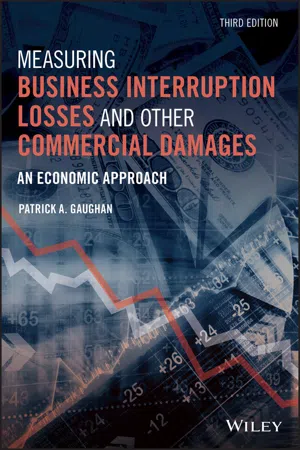Economics
Effects of Recession
The effects of a recession include a decline in economic activity, such as decreased consumer spending, business investment, and employment. This can lead to reduced income, increased unemployment, and a decrease in overall economic growth. Recessions can also impact financial markets, leading to decreased asset values and investment returns.
Written by Perlego with AI-assistance
Related key terms
Related key terms
1 of 4
Related key terms
1 of 3
4 Key excerpts on "Effects of Recession"
- No longer available |Learn more
Contemporary Economics
An Applications Approach
- Robert Carbaugh(Author)
- 2016(Publication Date)
- Routledge(Publisher)
Home prices increased rapidly until they became unsustainable relative to household incomes. When that occurred in 2006–2007, the bubble burst and housing prices crashed. Many homeowners found that their mortgage debt was higher than the value of their houses and they could not pay back their mortgages. They walked away from their homes and turned the keys back to the banks, which now held assets of decreasing value. As the survival of many banks was threatened, they restricted the supply of loans to businesses and households which ultimately pushed the economy into recession.In June 2009, the U.S. economy hit its trough, followed by a very slow recovery. The role of economic policy in combating the recession of 2007–2009 will be discussed in Chapters 13 and 15 of this text.Check Point
- Identify the four phases of the business cycle.
- What factors cause the economy to turn upward or downward?
- Do economic expansions die of old age?
- What triggered the recession of 2007–2009?
Unemployment
One reason we want to avoid recessions and depressions is that they cause hardship among individuals. During a recession, not only does real GDP decline, but also fewer people are able to find jobs. Economists define the unemployed as those individuals who do not have jobs but who are actively seeking work.Besides imposing costs on individuals, unemployment generates a cost for the economy as a whole because it produces fewer goods and services. When the economy does not provide enough jobs to employ everyone who is seeking work, the productivity of that unemployed labor is forgone. This lost output, combined with the hardship that unemployment imposes on individuals and their families, is the real cost of unemployment.Measuring Unemployment
The unemployment rate is a closely watched measure of an economy’s health. How is the unemployment rate calculated, and what does it mean?Every month, the U.S. Bureau of Labor Statistics conducts a random survey of about 60,000 households to gather information on labor market activities. The survey divides the adult (16 years old and over) population into three categories: - eBook - ePub
The Recession and Beyond
Local and Regional Responses to the Downturn
- David Bailey, Caroline Chapain(Authors)
- 2012(Publication Date)
- Routledge(Publisher)
Recession is commonly identified as an economy experiencing ‘at least two quarters’ of falling GDP. On this basis, the UK has experienced four ‘major’ recessions in the post-Second World War period: 1973–75, 1980–81, 1990–91 and 2008–09. At the same time more ‘minor’ recessions occurred on three occasions between the mid 1950s and early 1960s, but these were short lived and characterised by immediate periods of strong growth (Chamberlin 2010). Recessions are typically marked by contractions in output, income, employment, production and sales. However, both between and within recessionary periods the magnitude of impact on businesses, and the way in which such impacts are experienced, varies dramatically. The most recent recession, in 2008–09, witnessed the steepest decline in output since the Second World War, with six successive quarters of negative growth, yet the effect on employment has been relatively modest (at the time of writing at least) when compared to previous recessions. It is the aim of this chapter to describe and account for this somewhat unique outcome through an analysis of the critical interplay of structural, economic and political factors. Specifically, the chapter will first explore in detail how UK business has been affected by the recent recession compared to those previously, using metrics such as output, employment, unemployment, redundancies and insolvencies to evidence impact; second, describe the differential impact the recession has had on businesses, drawing out spatial, sectoral and structural contrasts; third, account for the trends observed through an exploration of the strategies employed by firms in reacting to recession; and fourth, identify the combination of factors which underpinned firms’ strategic behaviour.Key features of the 2008–09 recession Employment and outputIn describing and accounting for the key features and impact of the recent recession, it is important to understand its origins and how these differed markedly from each of the two preceding recessions. These factors are significant in helping to account for the way in which businesses have to a large extent been better placed to respond to recession this time. In the recessions of the 1980s and 1990s, significant inflationary pressures resulting in tightened monetary policy (either through taxation or interest rates) saw a sharp fall in demand, with consequent rises in unemployment. In contrast, the 2008–09 recession followed a period of unparalleled stability in the UK and global economies, marked by a ‘non-inflationary constantly expanding decade’ (Jenkins 2010: 30). This period of relative stability masked an unsustainable credit boom brought to light by the collapse of the US sub-prime mortgage market and subsequent hiatus in lending, otherwise described as the ‘credit crunch’. This process led to a fall-off in demand as indebted households and businesses sought to restructure their finances. A crucial point to note is that the factors which underpinned the 2008–09 recession provided a more conducive fiscal environment and enabled firms to enter the downturn on a stronger footing in terms of their profitability than was the case in either the 1980s or 1990s recessions. - eBook - ePub
Measuring Business Interruption Losses and Other Commercial Damages
An Economic Approach
- Patrick A. Gaughan(Author)
- 2020(Publication Date)
- Wiley(Publisher)
Exhibit 3.1 features the usual textbook presentation of a business cycle; it shows an expansion phase that reaches a peak followed by a downturn, usually referred to as a recession. However, the economy does not behave in such a predictable manner. Moreover, the economics profession has not been very successful in predicting the turning points of business cycles.Definition of a Recession
When the economy turns down and exhibits negative growth, this is termed a recession. Exhibit 3.2 depicts the 1990–91, 2001, and 2008–09 recessions. As mentioned earlier, recessions are generally defined as periods when economic growth is negative.EXHIBIT 3.2 Examples of the 1990–91, 2001, and 2008–09 recessions.Source: U.S. Department of Commerce, Bureau of Economic Analysis, Washington, DC, NBER.A simple definition of a recession, one that is often used by the media, is a period when there are two consecutive quarters of negative growth. Recessions, however, are defined on a case‐by‐case basis by the Business Cycle Dating Committee of the National Bureau of Economic Research (NBER) using a variety of economic data to make this determination.2 This is a group of six economists, ones who specialize in macroeconomics and business fluctuations, who essentially make a judgment call based on their review of a variety of economic data. They look at more than simply real gross domestic product (GDP) growth; they also consider factors such as employment, personal income, manufacturing, and industrial production.3Table 3.1 shows the recessions that occurred in the U.S. economy between 1948 and 2009. The average duration of a recession is 10.4 months. The severity of recessions decreased in the U.S. economy of the twentieth century (until we got to the Great Recession). Exhibit 3.3 - eBook - ePub
Poverty and Sustainable Development in Asia
Impacts and Responses to the Global Economic Crisis
- Armin Bauer, Myo Thant(Authors)
- 2015(Publication Date)
- Asian Development Bank(Publisher)
The impact of the world recession on Indonesia and an appropriate policy response: Some lessons for AsiaGustav F. Papanek and M. Chatib Basri 1 with Daniel M. Schydlowsky 2Introduction
This chapter examines the impact of the global recession on Indonesia, the largest country in Southeast Asia. The chapter examines the impact on unemployment and the policies that have been utilized by the government to minimize the impact of the recession. The chapter concludes with a section on lessons for other Asian countries.1. The recession and Indonesia—A surprisingly small macroeconomic impact
In the early stages of the global recession,3 it was feared that Indonesia would be hard hit. Export earnings were expected to decline by 30% or $30 billion–$40 billion, which would be a loss of 7.5%–10.0% of national income. Add declining remittances and tourist income, and a sharp decline in expected foreign private investment, and the direct cost of the recession was expected to be a more than 10% decline of national income.Indirect costs, as the impact worked its way through the economy, would nearly double that (a “multiplier” of 1.8–2.0). The direct and indirect costs of the world recession on an initial analysis therefore were estimated to result in a horrific decline of 15% or more in gross domestic product (GDP).However, these estimates ignore the offsetting benefits of the recession (and the costs of the subsequent recovery). Table 1 indicates all the international variables to be taken into account. It demonstrates the importance of systematically evaluating the impact of the recession (or other changes in the world economy) through all the channels connecting Indonesia to that economy.Note: Annual data for most items under B and C for 2009 are not yet available. Fourth quarter is an estimate.Table 1 : Direct impact of the world economic recession on Indonesia—Summary($ billion, rounded)
Index pages curate the most relevant extracts from our library of academic textbooks. They’ve been created using an in-house natural language model (NLM), each adding context and meaning to key research topics.
Explore more topic indexes
Explore more topic indexes
1 of 6
Explore more topic indexes
1 of 4



